Volume 47, Issue 3
Displaying 1-17 of 17 articles from this issue
- |<
- <
- 1
- >
- >|
Clinical Studies
-
2006 Volume 47 Issue 3 Pages 325-330
Published: 2006
Released on J-STAGE: July 06, 2006
Download PDF (157K) -
2006 Volume 47 Issue 3 Pages 331-342
Published: 2006
Released on J-STAGE: July 06, 2006
Download PDF (311K) -
2006 Volume 47 Issue 3 Pages 343-350
Published: 2006
Released on J-STAGE: July 06, 2006
Download PDF (156K) -
2006 Volume 47 Issue 3 Pages 351-361
Published: 2006
Released on J-STAGE: July 06, 2006
Download PDF (421K) -
2006 Volume 47 Issue 3 Pages 363-370
Published: 2006
Released on J-STAGE: July 06, 2006
Download PDF (367K) -
2006 Volume 47 Issue 3 Pages 371-379
Published: 2006
Released on J-STAGE: July 06, 2006
Download PDF (152K) -
2006 Volume 47 Issue 3 Pages 381-389
Published: 2006
Released on J-STAGE: July 06, 2006
Download PDF (2167K) -
2006 Volume 47 Issue 3 Pages 391-400
Published: 2006
Released on J-STAGE: July 06, 2006
Download PDF (336K) -
2006 Volume 47 Issue 3 Pages 401-408
Published: 2006
Released on J-STAGE: July 06, 2006
Download PDF (144K) -
2006 Volume 47 Issue 3 Pages 409-420
Published: 2006
Released on J-STAGE: July 06, 2006
Download PDF (216K) -
2006 Volume 47 Issue 3 Pages 421-430
Published: 2006
Released on J-STAGE: July 06, 2006
Download PDF (348K) -
2006 Volume 47 Issue 3 Pages 431-440
Published: 2006
Released on J-STAGE: July 06, 2006
Download PDF (170K) -
2006 Volume 47 Issue 3 Pages 441-453
Published: 2006
Released on J-STAGE: July 06, 2006
Download PDF (356K)
Case Reports
-
2006 Volume 47 Issue 3 Pages 455-460
Published: 2006
Released on J-STAGE: July 06, 2006
Download PDF (693K) -
2006 Volume 47 Issue 3 Pages 461-468
Published: 2006
Released on J-STAGE: July 06, 2006
Download PDF (2785K) -
2006 Volume 47 Issue 3 Pages 469-474
Published: 2006
Released on J-STAGE: July 06, 2006
Download PDF (1444K) -
2006 Volume 47 Issue 3 Pages 475-482
Published: 2006
Released on J-STAGE: July 06, 2006
Download PDF (1247K)
- |<
- <
- 1
- >
- >|
